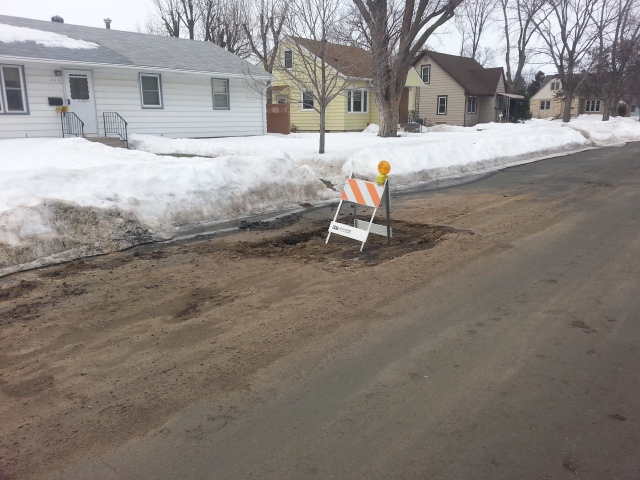Quote of the Day
Maybe not today..., maybe not tomorrow..., but someday... soon; ... and for the rest of your life ...
- Rick Blaine, Casablanca.
I was in my home town of Osseo this weekend to do some computer work for my mother. As I drove through town, I noticed many signs of water system maintenance (see Figure 1). This is a sign that the winter this year was a hard one - the soil froze so deep that the water pipes froze and burst. This can bring about different types of leaks to your home and surrounding areas such as slab leaks, detecting slab leaks are important and there are signs to look out for in your area, for instance, cracks, raised water bills, hot spots on the floor, etc. If this happens, contact a plumber local to you. You can search for a plumber by clicking plumber near me here.
Frozen water pipes happen every year. Households who don't take precautions often get their pipes frozen and the ice expanding causes them to burst and leak. You would then have to get your leak fixed and remember not to do the same the next year. It is also important to remember that this can happen to households in countries from all over the world, so you should always have the relevant precautions and knowledge in place in case it does. For example, if you live in Sydney, then you may want to have a look at the causes of leaky pipes in Sydney homes to put yourselves in the best possible position in having well-working pipes for the winter season. So what's the big deal now? Well, this year it's the actual main water pipes that are freezing; not the small household ones.
In my region, state regulations require that we bury water pipes 48 inches deep. Since the frost depth in the southern counties of Minnesota is stated as 42 inches, I have never seen problems like this before. However, this year the frost depth went down to 5 feet, hence the problems with pipes freezing in Osseo. The northern counties of Minnesota do have a 5 foot frost depth specification.
The Osseo water pipes that froze were all in the streets. We had a massive amount of snow this year, which insulated the pipes that run under the lawns and into homes. However, the streets were kept clear of snow and there was no insulating layer of snow on the streets to prevent the frost from going very deep.
I frequently have to deal with issues related to frost depth and fiber optic deployments. In clay soils, I see as much as 9 inches of frost heave. I have seen this frost movement tear the fiber out of the Optical Network Terminal (ONT).
Frost heave can damage much more substantial structures than an ONT. I had a conversation with a building inspector who said that he had seen Sonotube foundation piers split in half by frost heave. Figure 3 shows my sketch of the scenario he described. The frozen soil grabs the upper section of the pier and pulls it up, while the footing stays in place. This tears the pier in two.
I have included an old US government frost depth (or line) graph in Figure 4 so that you can see the frost depth in your area.





Pingback: Its Warm Out and the PVC is Getting Longer … | Math Encounters Blog